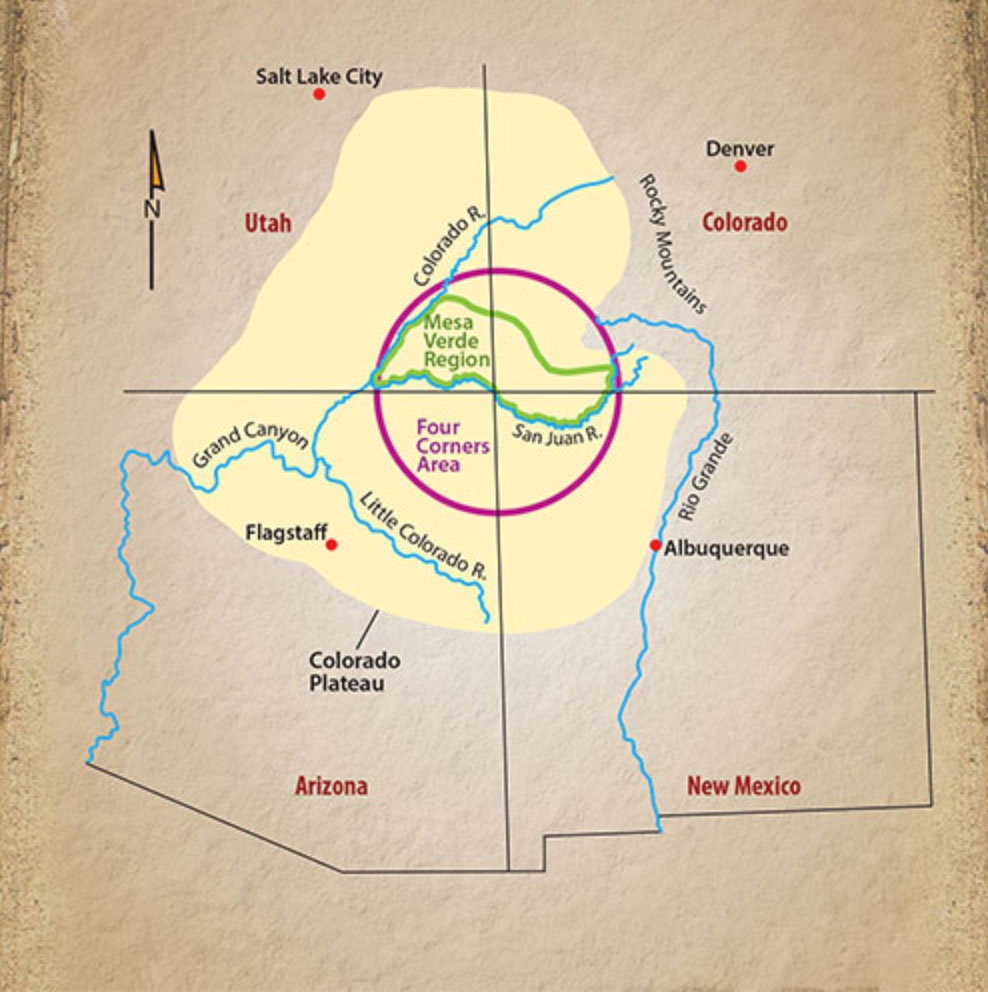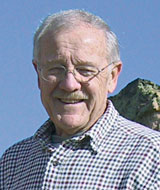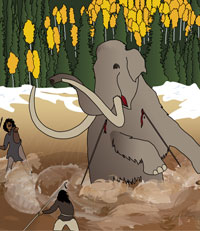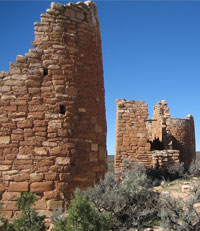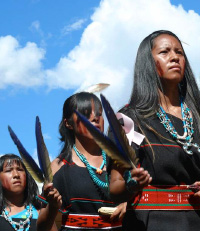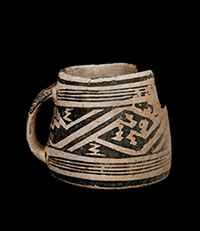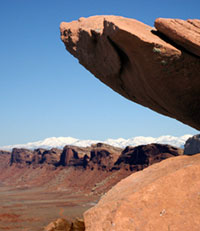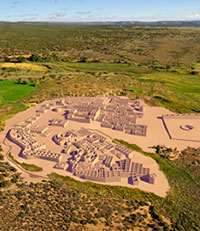VOICES
Perspectives on Pueblo History and Culture
Pueblo historical perspectives are shaped by their deep cultural heritage, kept alive through oral tradition. Archaeologists’ understanding of Pueblo history derives primarily from the application of the scientific method. In this series of videos, Pueblo people and archaeologists discuss aspects of Pueblo history and culture from their different—but often complementary—perspectives.
See map for locations of areas discussed in the videos.
Filmed at Crow Canyon, in partnership with History Colorado and the Science Museum of Minnesota; funding provided by the National Science Foundation.
Connections to the Ancestors
Thirteenth-Century Migrations
Language
Oral Tradition
Corn
Water
VOICES
Perspectives on Pueblo History and Culture
The Great Pueblo Migrations of the 13th Century
In about A.D. 1250, the number of Pueblo people living in the Mesa Verde region peaked at more than 20,000. Only 35 years later, by about A.D. 1285, they were gone—the result of a decades-long exodus sometimes called the “great Pueblo migrations.” Why the Pueblo people left the Mesa Verde region and where they went are questions that have intrigued generations of archaeologists.
Former Crow Canyon Director of Research and Washington State University Professor Emeritus William Lipe discusses the thirteenth-century depopulation of the Mesa Verde region in Leaving Mesa Verde: The Great Pueblo Migrations of the 13th Century a lecture presented as part of Archaeology Southwest’s Tea and Archaeology series. (01:05:32)
Timelines
The following timelines mark significant, but selected, developments and events in Pueblo Indian history as documented in the archaeological and historical records. The timelines do not pretend to represent the perspectives of Pueblo people, who have their own approaches to remembering, documenting, and interpreting events important to them. For Pueblo perspectives on their history and culture, see Voices.
The timelines are not grouped by archaeological periods, because the date ranges for periods vary from region to region in the Pueblo Southwest. If you would like to approximately correlate the events presented in the timelines with archaeological time periods, see the Pecos Classification for one example.
Galleries
The galleries provide a visual glimpse into the ancient Pueblo world: artifacts, landscape, and three-dimensional site reconstructions.
Refer to the individual galleries for photo and funding credits. Please note that images displayed in the galleries may not be reproduced without permission of the copyright owners; copyright ownership varies. For more information, e-mail the managing editor.
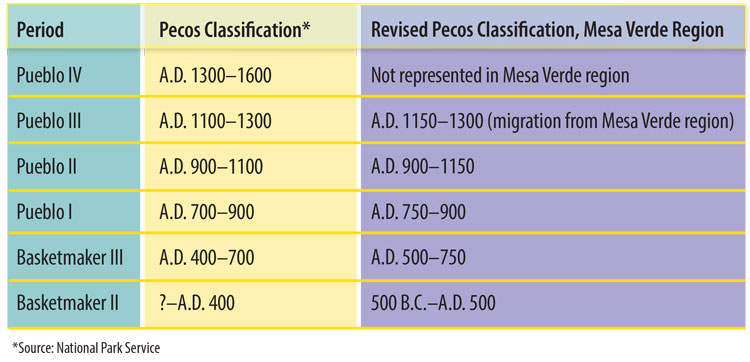
Pecos Classification
Initially proposed by archaeologist Alfred V. Kidder at the first annual Pecos Conference in 1927, the Pecos Classification—or variations of it—has been used by archaeologists to assign ancient Pueblo sites to broad time periods on the basis of pottery types and architectural styles. Here, we present the “basic” version of the classification and a revised version for the Mesa Verde region.

